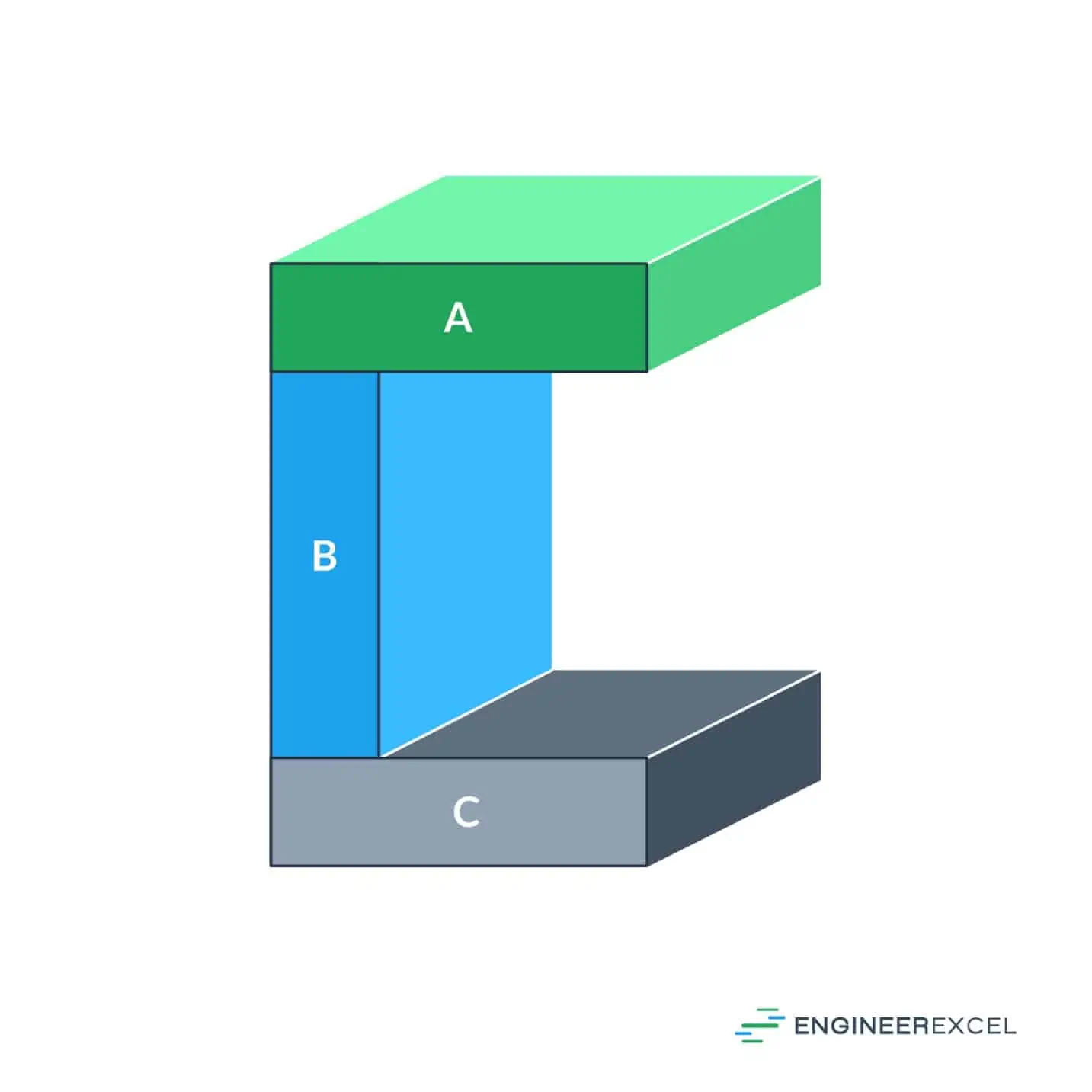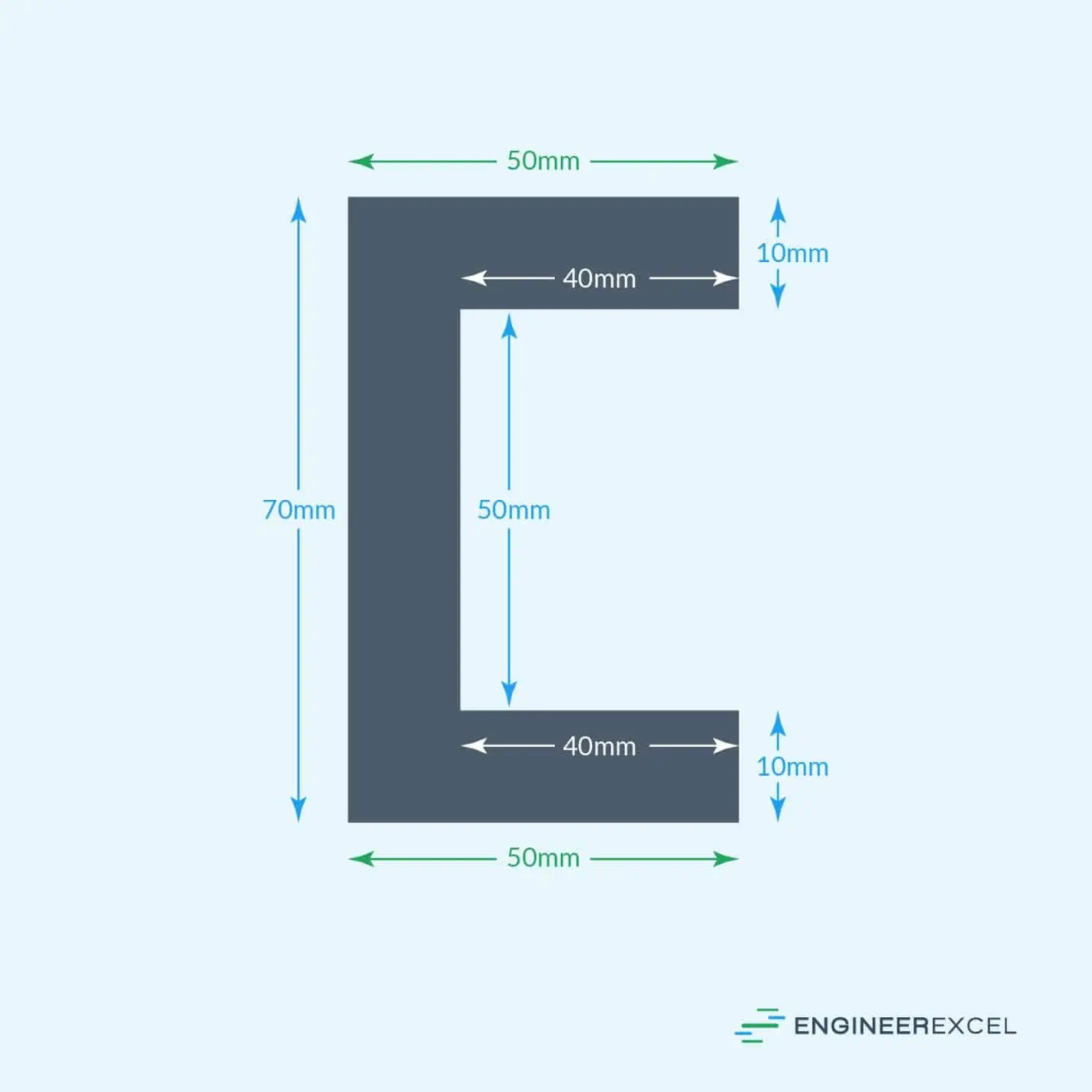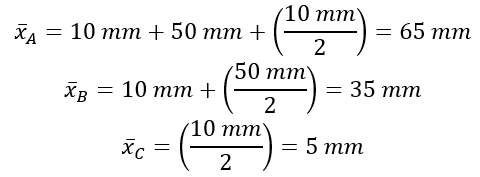A C channel is a common structural element that is often used in building things such as bridges, walls, or in metal frames. As part of the engineering design of these structures, understanding how a C channel will respond to various forces and loads is necessary. A key parameter of any structural member is its moment of inertia to understand how that member will bend or flex due to a load. Therefore, calculating the moment of inertia of a C channel is important.

Calculating The Moment Of Inertia Of A C Channel
To calculate the moment of inertia of a C channel, there are several steps that need to be carried out. First, the C channel needs to be split into separate pieces for analysis and the area of each of these pieces needs to be determined. Then, the center of gravity of the C channel needs to be found so that the moment of inertia about the centroid can be evaluated. Each of these steps is introduced in detail below.
Splitting the C channel
Often, when calculating the moment of inertia of a complex shape, dividing the shape into different pieces is the most effective means for evaluating the total moment of inertia. For a C channel, such as the one shown in the following figure, separating it into three individual rectangles is appropriate.

Elevate Your Engineering With Excel
Advance in Excel with engineering-focused training that equips you with the skills to streamline projects and accelerate your career.


The area of each piece of the C channel, A, B, and C is calculated as its individual width times height. Using the area of each section, the center of gravity is found.
Calculating the center of gravity of a C channel
A C channel is symmetric about its x-axis, but not about its y-axis. However, using the following equation, the location of the y-axis centroid can be determined:

where:
- ȳc is the location of the y-axis centroid of the C channel, with SI units of mm
- ȳI is the location of the y-axis centroid of one of the pieces, with SI units of mm
- Ai is the area of one of the pieces, with SI units of mm2
Example Calculation
As an example of locating the y-axis centroid, take a C channel that is dimensioned as follows:

Splitting the C channel into three rectangles, A, B, and C, with the following dimensions:
- A = 10 mm × 50 mm
- B = 50 mm × 10 mm
- C = 10 mm × 50 mm
The location of the y-axis centroid for each piece is as follows:

Then, using the equation for ȳc:

Now that the preliminary steps have been carried out, the moments of inertia about the x– and y-axis can be calculated for the C channel.
Calculating The Moment Of Inertia About The X-Axis
The moment of inertia of a C channel about its x-axis can be calculated as follows:

where:
- Ix is the moment of inertia for the entire C channel about its x-axis, with SI units of mm4
- Ixi is the moment of inertia of each section about its individual x-axis, with SI units of mm4
The moment of inertia of a rectangle about its x-axis is calculated using the following equation:

where:
- w is the width of the rectangle, with SI units of mm
- h is the height of the rectangle, with SI units of mm
Because each piece of the C channel is located at a different distance from the x-axis, it is necessary to use the parallel axis theorem to determine each piece’s moment of inertia about the x-axis of the complete channel. The parallel axis theorem is introduced as follows:

where:
- Ix’ is the moment of inertia of the section about the overall x-axis, with SI units of mm4
- Ix is the moment of inertia of the section about its own x-axis, with SI units of mm4
- A is the area of the section, with SI units of mm2
- d is the distance from the x-axis of the section to the overall x-axis, with SI units of mm
After the moment of inertia about the overall C channel x-axis is determined for each section, they can be added together to determine the total moment of inertia about the x-axis for the C channel.
Example Calculation
Continuing to use the above C channel, the moment of inertia about the x-axis can be calculated using the following steps:
- Calculate the moment of inertia of each section about its own x-axis:

- Locate the x-axis of each section:

- Calculate the distance d from the total x-axis for each section:

- Use the parallel axis theorem to determine the moment of inertia for each section about the overall x-axis:

- Sum all individual moments of inertia to determine the total moment of inertia for the C channel about its x-axis:

Calculating The Moment Of Inertia About The Y-Axis
Similar to calculating the moment of inertia about the x-axis, the moment of inertia of a C channel about its y-axis can be determined by summing the individual section moments of inertia:

The equation for the moment of inertia of a rectangle about its y-axis is calculated as follows:

Again, the parallel axis theorem is used to find the moment of inertia of each section about the overall y-axis of the C channel, substituting the distance from the y-axis calculated previously for the distance from the x-axis.
Example Calculation
Continuing to use the above C channel, the moment of inertia about the y-axis can be calculated using the following steps:
- Calculate the moment of inertia of each section about its own y-axis:

- Locate the y-axis of each section:

- Calculate the distance d from the total y-axis for each section:

- Use the parallel axis theorem to determine the moment of inertia for each section about the overall y-axis:

- Sum all individual moments of inertia to determine the total moment of inertia for the C channel about its y-axis:

